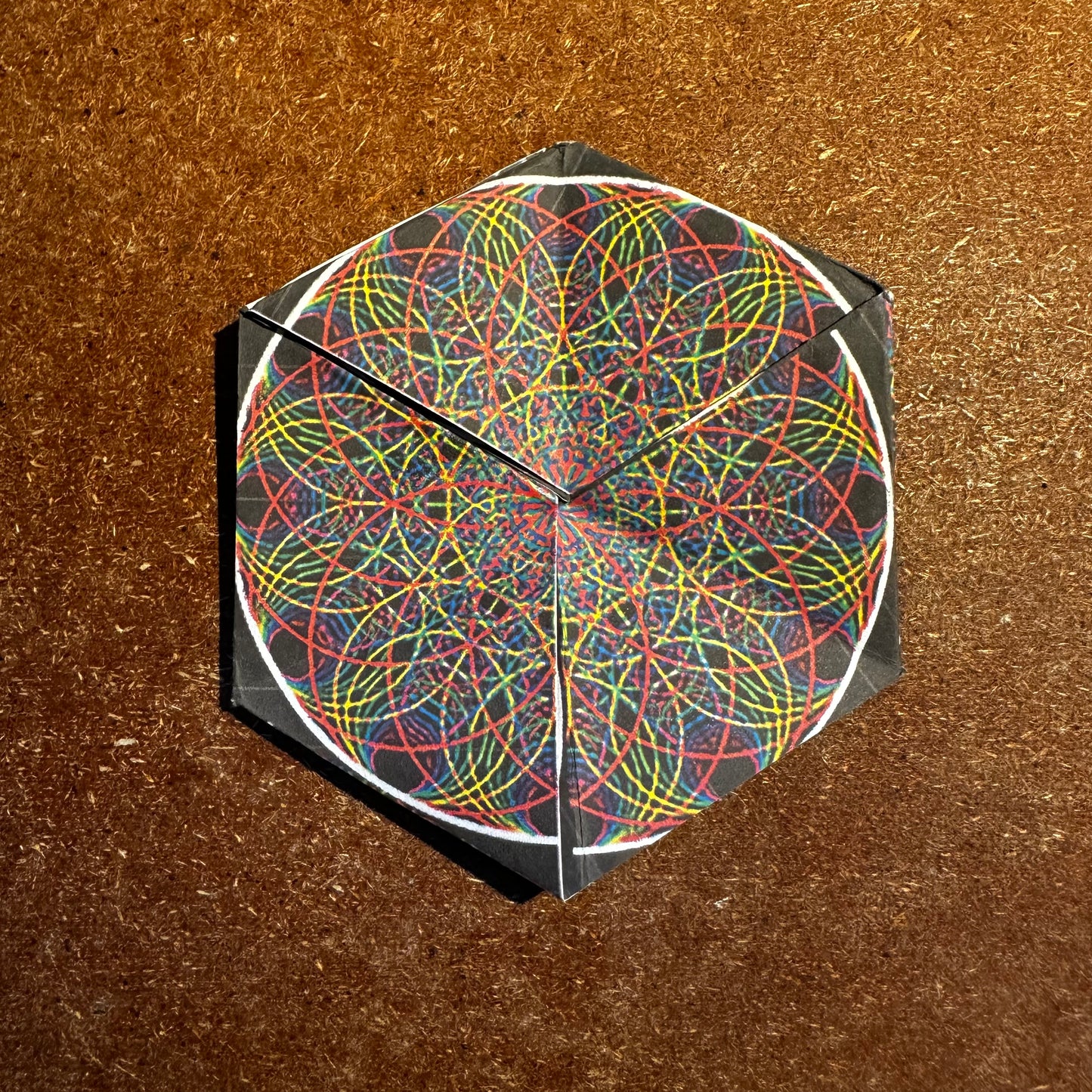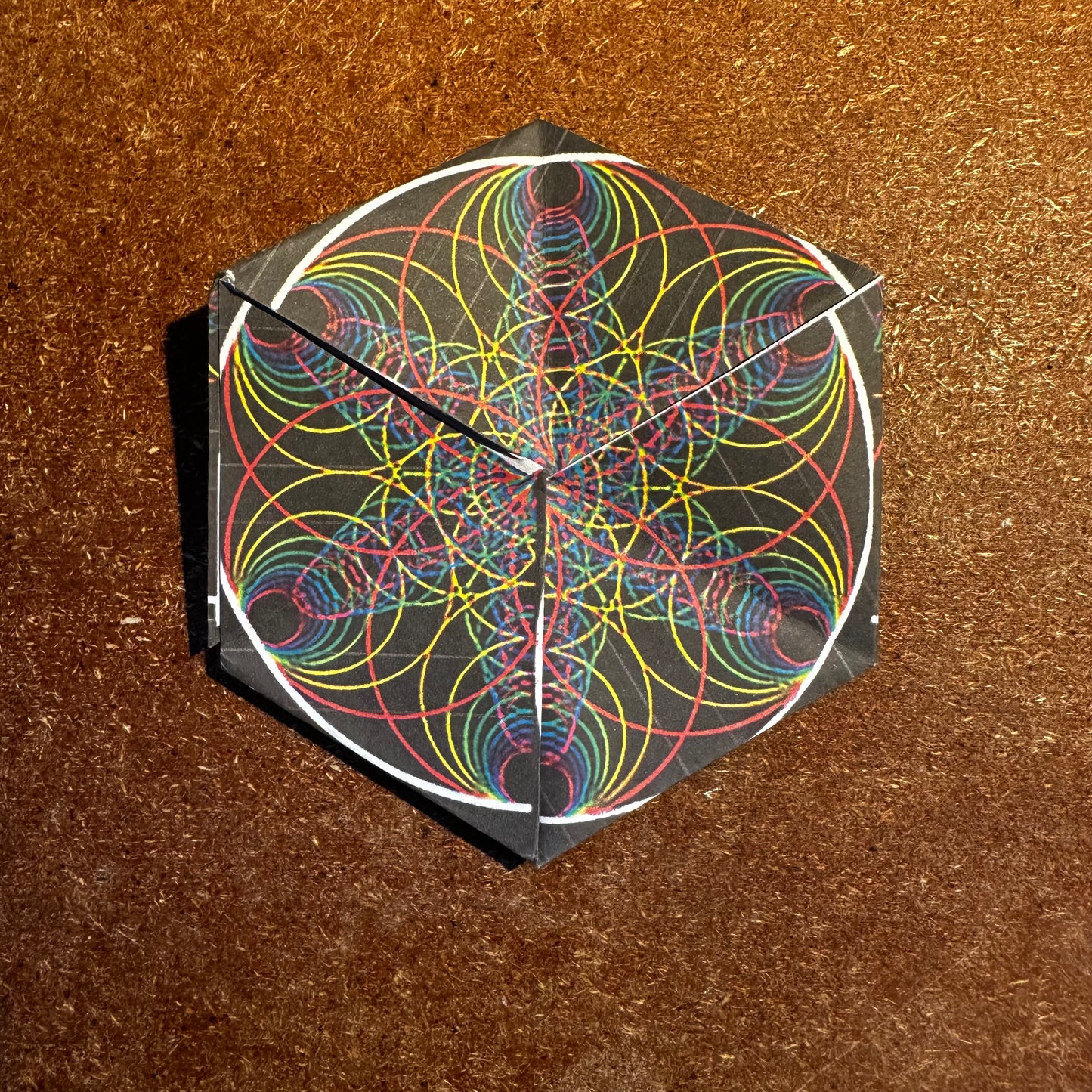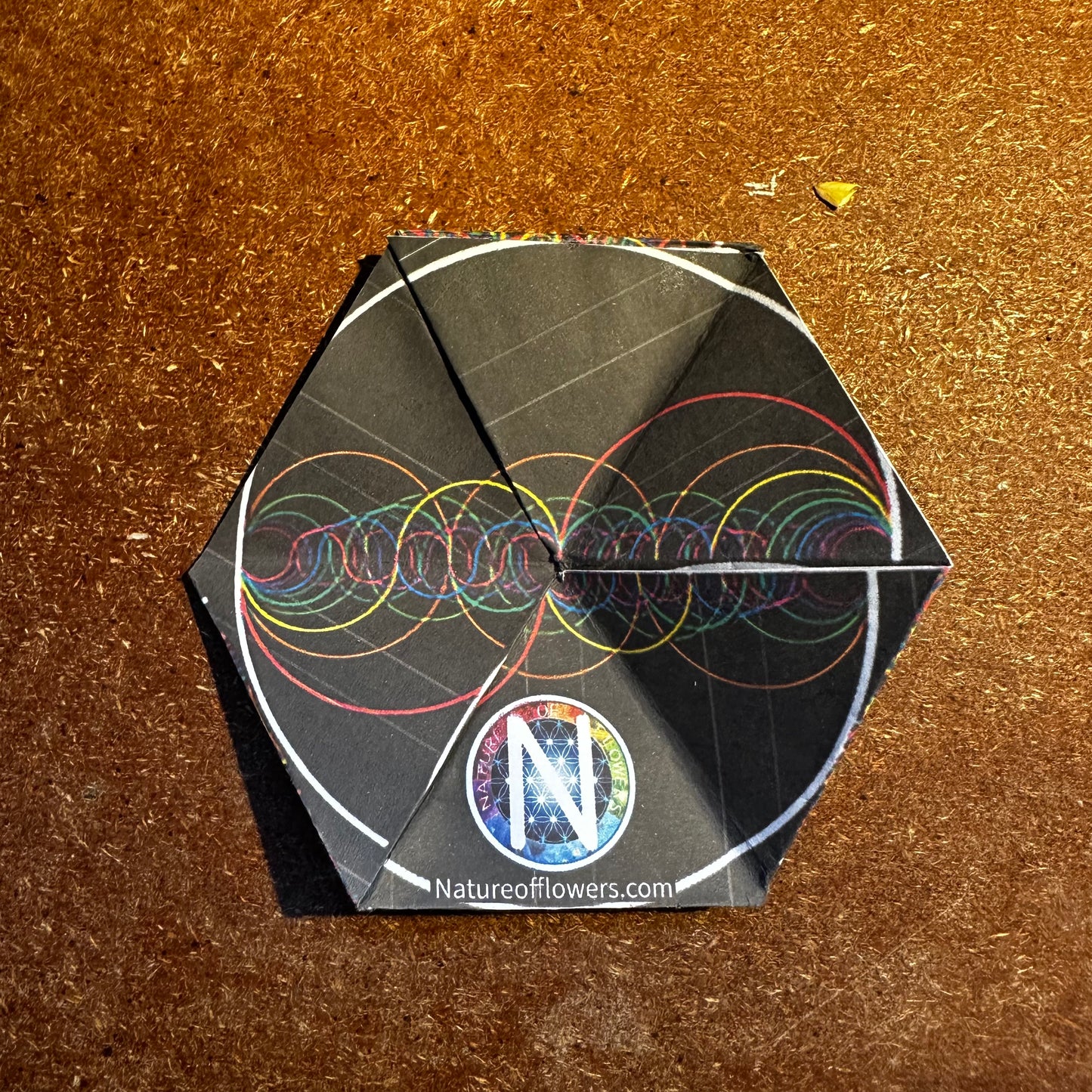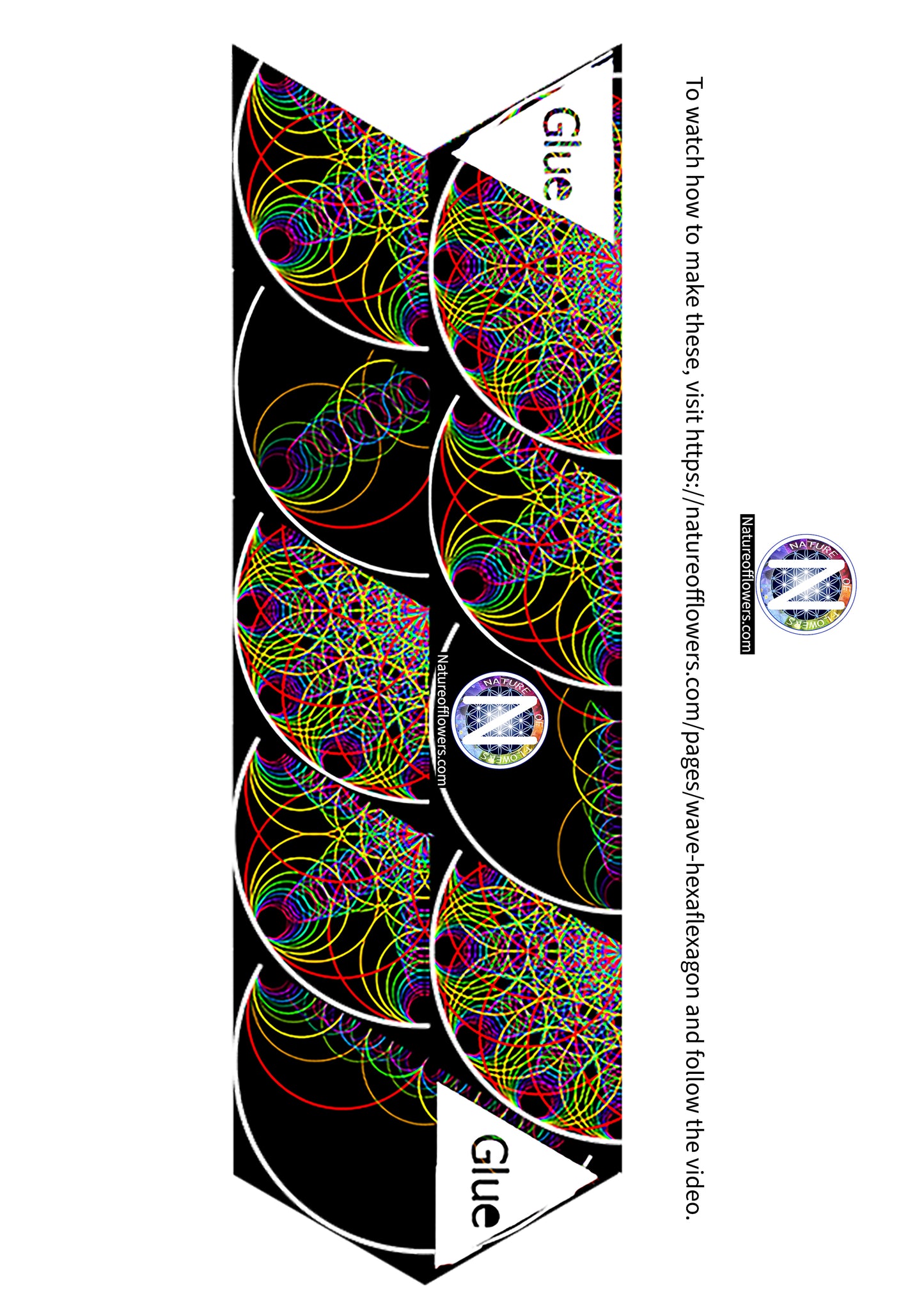Nature of Flowers
Couldn't load pickup availability
A hexaflexagon is a fascinating mathematical paper model that has the ability to “flex” and reveal hidden faces. It is a type of flexagon, a flat, folded geometric shape made of paper. The most common form is the trihexaflexagon, which is a hexagon that can reveal three different faces when flexed.
Hexiflexigons or Hexaflexagons
Free hexaflexagon to download from Natureofflowers.com
https://www.youtube.com/shorts/9j9ZHyUnTMo
Here’s a step-by-step guide to making and folding a trihexaflexagon:
Materials Needed
• A strip of paper (preferably thin and long, like the ones from a roll of receipt paper).
• Ruler (optional, for precision).
• Pencil or marker for marking folds.
• Glue or tape.
Steps to Make a Hexaflexagon
1. Cut the Paper Strip
• Cut a strip of paper about 1 inch wide and 11-18 inches long.
• The longer the strip, the easier it is to fold.
2. Mark Triangles on the Strip
• Divide the strip into 10 equilateral triangles (all sides equal). You can use a ruler and protractor or fold to approximate.
• Number the triangles lightly as follows:
1, 2, 3, 4, 5, 6, 1, 2, 3, 4.
• These numbers represent the sequence of faces that will appear when you fold.
3. Fold the Triangles
• Start at one end and fold the triangles back and forth, forming a zigzag.
• Follow the numbering pattern to ensure the right faces are matched during folding.
• You’ll create a hexagonal shape when finished.
4. Glue or Tape the End
• Once folded into the hexagon, the last triangle will overlap the first triangle. Use glue or tape to secure the structure.
How to Flex It
1. Hold the hexagon by its edges.
2. Pinch two opposite edges together, causing the hexagon to “open” along one axis.
3. Rotate or “flex” the model to reveal a new hidden face.
4. Experiment with the flexing motion to explore all the faces!
Tips and Tricks
• Start with a plain strip of paper for practice. Once you master the technique, you can color the faces for a more visually striking result.
• Be gentle when flexing; excessive force can tear the paper.
By folding and exploring, you’ll uncover the hidden mathematical properties of the hexaflexagon!










